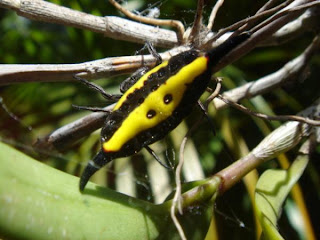 Negros Occidental High School
Negros Occidental High School was the school where I attended my freshman and sophomore years. I brought my girls here today for their PEPT (Philippine Educational Placement Test conducted yearly by the Department of Education) so that they would be properly placed in the appropriate academic learning level proportionate to their ages.

As they were taking their PEPT, I snapped pictures of my sort of "half" Alma Mater which is
Negros Occidental High School or more popularly known then as the Provincial High School with a condescending tone it seemed to me. These days, people call it by its acronym,
NOHS.

There were new structures and improvements, but most of the old buildings of
Negros Occidental High School are still well-preserved, giving off antique charm bewitching to former students like me for a trip down memory lane.

1983. The shy girl that I used to be, I remember aloofly walking along these crowded walkways, dreading every step of the way, imagining myself melting from the stares before even reaching my destination.

I'm not sure if the students of today still call this place "maintain silence", so called because the phrase was painted in big red letters across the back rests of these concrete benches. Those words are now painted over with decorative painting. During my second year at the
Negros Occidental High School, I was gaining a little bit of popularity so that as I tried to walk as invisibly as I could, I would still get noticed and get my share of that familiar fan cry, "Idol! Idol!" (Wow!)

I mostly attended classes at the Main Building, a stately structure in the sprawling
Negros Occidental High School campus.

But I had to say goodbye to what I thought would be my high school until my senior year as I was transferred to the University of Negros Occidental-Recoletos for my Junior and Senior years.
Truly it was a blast from the past as I was drawn by the statuesque goddesses serenely guarding the esteemed entrance of the
Negros Occidental High School. Their seemingly blank faces beckoning me in a trance. They don't make elegantly poised statues like these anymore in these parts.
Modesty aside, my drawing figures are anatomically proportionate, so that, if I will one day aspire to be a sculptress, artworks such as these would again adorn the landscape of Bacolod City with pride
(nyahaha! unlike the poorly executed sculpture of Lady Liberty in the Hall of Justice), in the tradition of amazing artistic feats as displayed by the architecture of the
Negros Occidental High School.





































